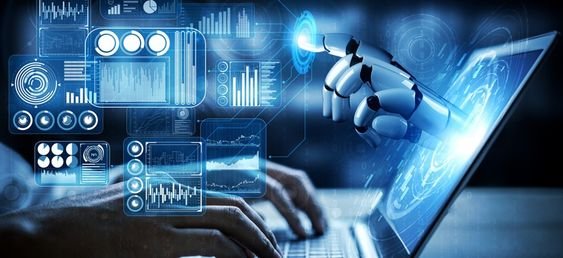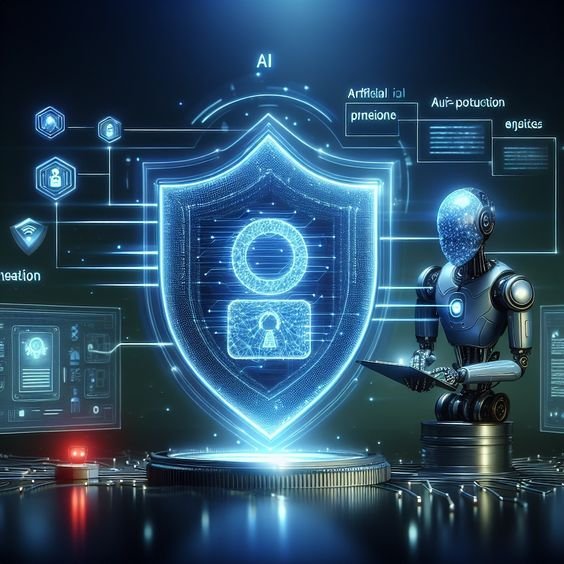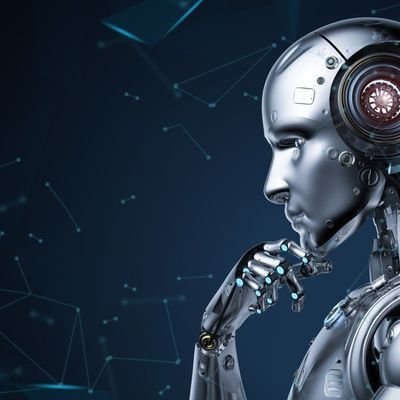
In an era where artificial intelligence (AI) is becoming increasingly sophisticated, the lines between original and synthetic content are blurring. This development presents both opportunities and challenges, particularly for content creators and artists who rely on platforms like YouTube to share their work. As AI technology continues to evolve, the potential for misuse—such as the unauthorized replication of voices, faces, and other likenesses—has become a growing concern. To address these issues, YouTube, owned by Google, has announced the development of new likeness management technology designed to protect creators and artists from unauthorized copying using generative AI.
This comprehensive article explores the implications of YouTube’s new tools, the broader context of AI-generated content, and the potential impact on creators, artists, and the digital ecosystem.
The Rise of AI-Generated Content: Opportunities and Risks
Artificial intelligence has revolutionized content creation, making it possible to generate music, images, and videos that mimic the style of existing creators. While this technology offers exciting possibilities, such as creating new artistic expressions and enhancing productivity, it also raises significant ethical and legal questions. One of the most pressing concerns is the unauthorized use of a person’s likeness—whether it be their voice, face, or other personal attributes—without their consent.
Generative AI: A Double-Edged Sword
Generative AI refers to systems capable of creating new content that closely resembles existing data. For example, AI can be trained on a dataset of a particular singer’s voice, allowing it to generate new songs that sound remarkably similar to that artist. Similarly, AI can be used to create deepfake videos, where a person’s face is digitally superimposed onto another’s body, creating a highly realistic but entirely fabricated video.
While these technologies have legitimate applications—such as in entertainment, education, and creative industries—they also have the potential for misuse. Unscrupulous individuals can use generative AI to create unauthorized copies of a creator’s work, leading to issues such as copyright infringement, defamation, and the erosion of trust in online content.
YouTube’s Response: Likeness Management Technology
Recognizing the challenges posed by generative AI, YouTube has taken proactive steps to protect creators and artists. The platform is developing new likeness management technology aimed at safeguarding creators’ voices, faces, and other personal attributes from unauthorized use. This technology is part of a broader effort by YouTube to balance the benefits of AI with the need to protect the rights and reputations of its users.
Synthetic-Singing Identification Technology
One of the key tools that YouTube is developing is synthetic-singing identification technology. This tool will be integrated into YouTube’s existing Content ID system, which is used by copyright holders to manage and protect their content on the platform. The synthetic-singing identification technology will enable YouTube partners—such as music labels and artists—to automatically identify and control AI-generated content that mimics their singing voices.
For example, if an AI system generates a song that closely resembles the voice of a famous singer, this technology will detect the imitation and allow the rightful owner to take action, such as removing the content or monetizing it. This tool is particularly important in the music industry, where the authenticity of an artist’s voice is a critical component of their brand and identity.
YouTube has stated that it is currently refining this technology and plans to launch a pilot program early next year. The pilot will allow a select group of partners to test the tool and provide feedback, which will be used to improve its effectiveness before a broader rollout.
Face Identification and Control Tool
In addition to protecting voices, YouTube is also developing a tool to help individuals control AI-generated content that depicts their faces. This tool will empower people across various fields—such as actors, influencers, and public figures—to identify and manage content that uses their likeness without authorization.
For instance, if a deepfake video is uploaded to YouTube showing a celebrity’s face in a compromising situation, the tool will allow the affected individual to detect the video and take appropriate action. This could include removing the video, issuing a takedown notice, or even pursuing legal action if necessary.
The development of this tool is a significant step forward in the fight against deepfakes and other forms of AI-generated content that can be used to deceive or harm individuals. It reflects YouTube’s commitment to maintaining a safe and trustworthy platform for its users.
Cracking Down on Unauthorized Scraping
YouTube has also pledged to crack down on those who scrape the platform to build AI tools. Scraping refers to the process of automatically extracting large amounts of data from a website, often without permission. In the context of YouTube, scraping can be used to gather data—such as video and audio files—to train AI models, which can then be used to create synthetic content.
YouTube has made it clear that unauthorized scraping violates its Terms of Service and undermines the value it provides to creators in exchange for their work. The platform has stated that it will continue to invest in systems that detect and prevent unauthorized access, including blocking access to those who engage in scraping activities.
This stance is part of a broader effort by YouTube to protect the integrity of its platform and ensure that creators retain control over their content. By preventing unauthorized scraping, YouTube aims to reduce the risk of AI-generated content being created without the consent of the individuals involved.
The Broader Context: AI, Content Creation, and Copyright
YouTube’s new likeness management technology is being developed against the backdrop of broader debates about the role of AI in content creation and the implications for copyright law. As AI-generated content becomes more prevalent, questions about authorship, ownership, and the rights of creators are becoming increasingly complex.
Copyright Challenges in the Age of AI
One of the key challenges posed by AI-generated content is determining who holds the copyright to such works. Traditional copyright law is based on the concept of human authorship, meaning that the creator of a work—such as a song, painting, or film—is the person who holds the rights to it. However, when AI systems generate content, the question of authorship becomes less clear.
If an AI system is trained on existing copyrighted works and then generates new content that closely resembles those works, who owns the copyright? Is it the person who trained the AI, the owner of the original works, or the creator of the AI system itself? These are questions that legal scholars and policymakers are grappling with as AI technology continues to advance.
The Role of Platforms Like YouTube
Platforms like YouTube play a critical role in shaping how AI-generated content is managed and regulated. As one of the largest video-sharing platforms in the world, YouTube has a responsibility to ensure that its users’ rights are protected while also enabling innovation and creativity. This is a delicate balance, as the platform must navigate the competing interests of creators, technology developers, and consumers.
By developing tools like synthetic-singing identification and face control, YouTube is taking a proactive approach to managing the challenges posed by AI. These tools allow creators to maintain control over their likeness and ensure that their work is not exploited without their consent. At the same time, they provide a framework for AI developers to innovate responsibly, with clear guidelines on what is and isn’t permissible.
The Impact on Creators and Artists
The introduction of YouTube’s likeness management technology is likely to have a significant impact on creators and artists, particularly those in the music and entertainment industries. By giving creators more control over how their likeness is used, these tools can help protect their brand and reputation, reduce the risk of unauthorized exploitation, and ensure that they are fairly compensated for their work.
For example, a singer who discovers that an AI-generated song closely mimics their voice can use YouTube’s tools to take action, whether by removing the content or monetizing it. This helps to prevent the dilution of their brand and ensures that their work is not used without permission.
Similarly, actors and public figures who are concerned about deepfakes can use YouTube’s face control tool to monitor and manage content that uses their likeness. This can help to protect their reputation and reduce the risk of misleading or harmful content being spread online.
Ethical Considerations and Future Directions
As YouTube continues to develop and refine its likeness management technology, several ethical considerations will need to be addressed. For example, how will YouTube ensure that these tools are not misused to censor legitimate content or stifle free expression? What safeguards will be put in place to prevent false positives, where content is incorrectly flagged as AI-generated?
These are important questions that will need to be carefully considered as the technology is rolled out. YouTube has a responsibility to ensure that its tools are used in a way that is fair, transparent, and respectful of users’ rights.
Looking ahead, it is likely that other platforms and industries will follow YouTube’s lead in developing similar tools to manage AI-generated content. As the technology continues to evolve, we can expect to see new innovations in this space, as well as ongoing debates about the ethical and legal implications of AI.
Conclusion: A New Era of Content Management on YouTube
YouTube’s announcement of its new likeness management technology marks a significant milestone in the ongoing efforts to protect creators and artists from the challenges posed by generative AI. By developing tools that allow users to control how their voices, faces, and other likenesses are used, YouTube is taking a proactive approach to managing the risks associated with AI-generated content.
These tools will empower creators to protect their work, maintain their brand integrity, and ensure that they are fairly compensated for their contributions. At the same time, they provide a framework for responsible innovation, allowing AI developers to continue pushing the boundaries of what is possible while respecting the rights of individuals.
As YouTube continues to refine and roll out these tools, it will be important to monitor their impact and ensure that they are used in a way that is fair, transparent, and respectful of users’ rights. By doing so, YouTube can help to create a safer and more trustworthy digital ecosystem where creators and artists can thrive in the age of AI.
ALSO READ: Best Hardware Solutions for Autonomous Vehicle Development








